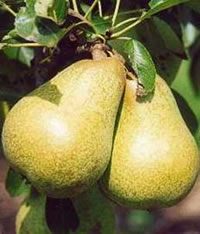Core Cuts
Wildlife charity fears threat to Chiswick’s disappearing fruit orchards
|
The crowded, cacophonous streets of the nation’s capital may seem like an unlikely place to find a fruit orchard, yet that is exactly what wildlife charity People’s Trust for Endangered Species (PTES) intends to do.
As part of their project to complete a vital inventory of traditionally managed orchards across England, PTES is calling for locals to rise to the challenge and help them survey their local s green spaces to identify vestiges of ancient orchards.
Overall, orchards have declined by over 60% across England in the last 50 years. These wildlife refuges are becoming increasingly rare due to the intensification of agriculture, pressure from land development, as well as economic competition within a global market and the increase of imported fruits, all of which are putting the already endangered species they support, such as the noble chafer beetle, under even greater threat.
PTES is in the final stages of compiling an inventory of traditional orchards in England, which will bring existing data up-to-date, underpin the conservation of this threatened habitat, as well as raise awareness about the importance of traditional orchards in the ecological landscape. In the project’s initial phase, conservation experts at PTES painstakingly analysed aerial photographs covering millions of hectares of the English countryside, locating over 30 000 traditional orchards which required more detailed assessment. Over 300 trained volunteers nationwide have thus far helped in the next stage, surveying orchards on the ground, recording the species, age and condition of the fruit trees.
“London’s urban landscape complicates our analysis of aerial photography, as it’s harder to identify orchards than in a rural setting,” explains Steve Oram, Orchard Mapper at PTES.
“However, we know there are isolated pockets of fruit trees in the city, so securing the help of Londoners, including the London Orchard Project and Abundance London, is essential in helping us to complete the inventory. With the loss of traditional orchards, we also face losing rare English fruit varieties, traditions, customs and knowledge, in addition to the genetic diversity represented by at least 1 800 species that are associated with this habitat.”
To volunteer for the PTES traditional English orchards mapping project in London, contact Anita Burrough, Orchard Project Officer on 020 7498 4533 or e-mail anita@ptes.org.
 Traditional English Orchards -
Did you know…?
Traditional English Orchards -
Did you know…?
• Some of London’s boroughs are associated with particular apple varieties, notably:
- Kingston on Thames – Mitchelson’s seedling
- Putney - Barchard’s Seedling was particularly popular with London market gardeners in the 1880s
- Turnham Green – Williams Bon Chrétien pear (see left)
- The London Pippin possibly dates back to the 16th Century
- The Royal Jubilee was introduced in the year of Queen Victoria’s Jubilee
• There are over 2,000 varieties of cooking and eating apple in Britain, and hundreds more of cider-making apples
• You could eat a different variety of English apple every day for over 6 years without eating the same one twice
• The apple is Britain’s national fruit
• Apples are a member of the rose family
November 23, 2010